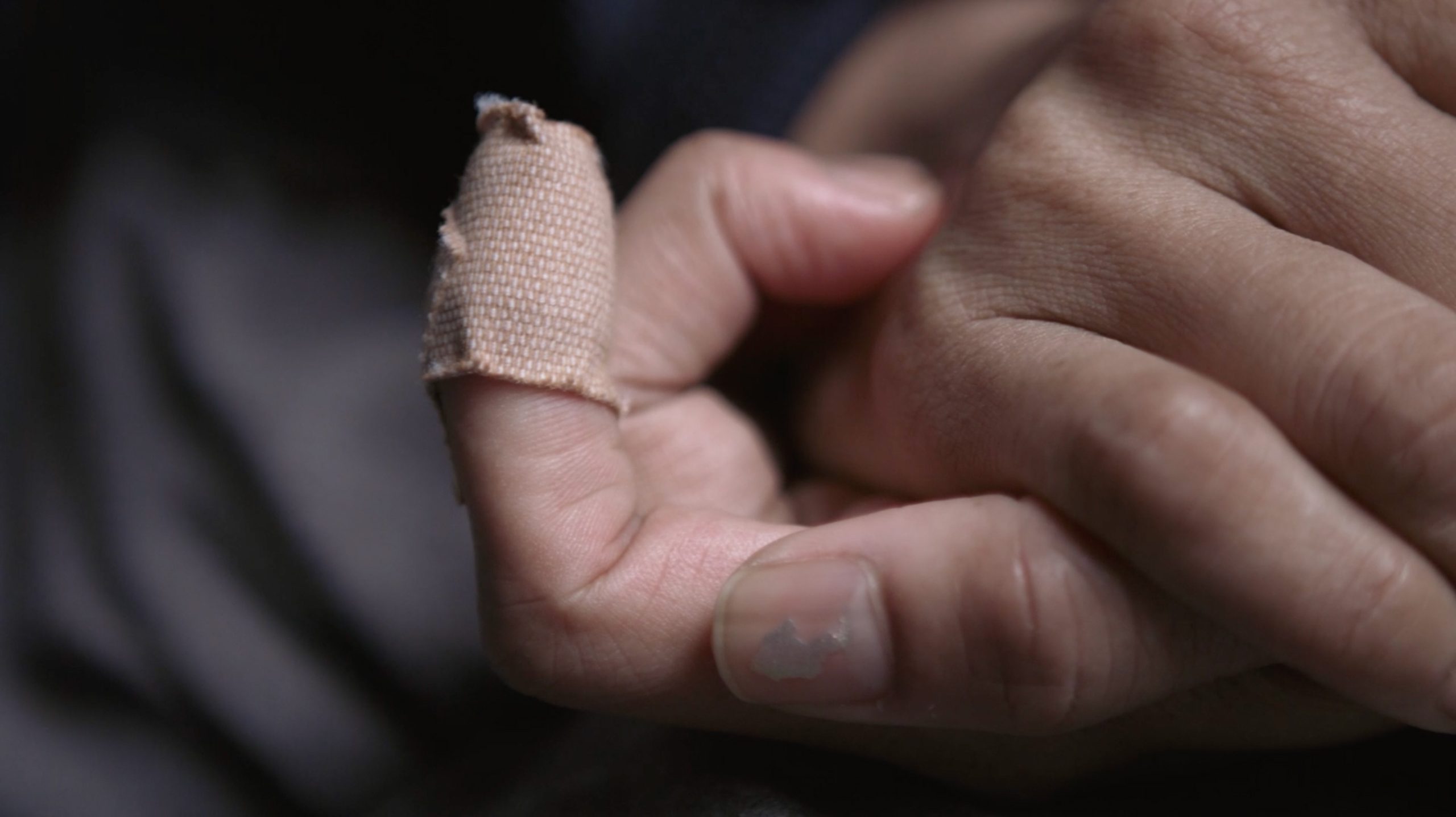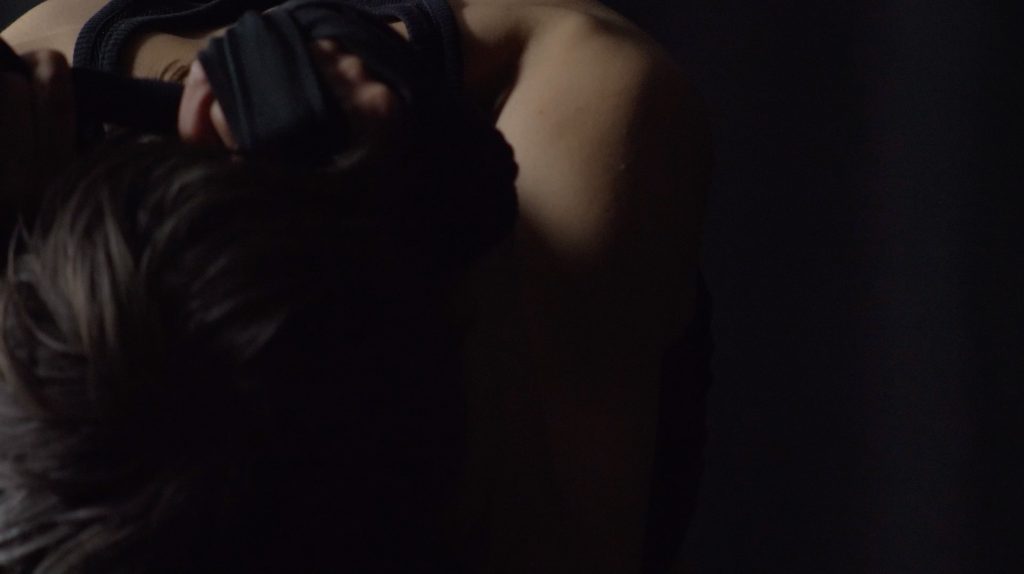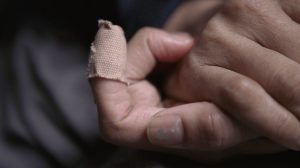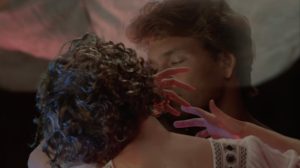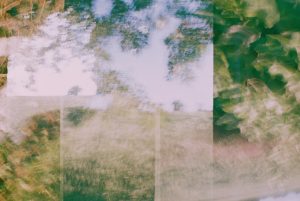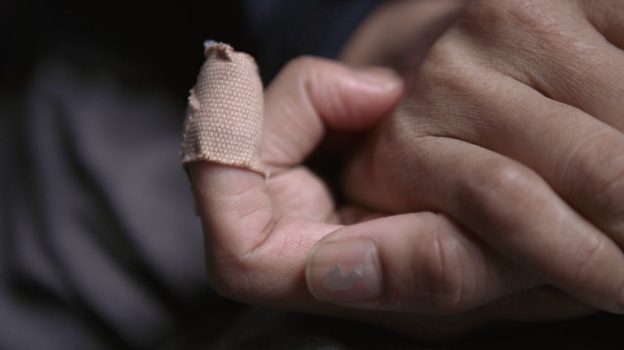
with an excerpt from the film
HYPERACUSIS (PART 2)
This was not written as part of the film, or in response to it, but is a parallel text exploring medical infrastructures and processes of diagnosis.
To survive, the body swallows into itself:
folding over, pushing inward and burrowing down.
So it retreats and recoils,
becomes dense in flesh-red darkness,
self-effacement as protection.
The scar looks like it’s constantly trying to worm its way back in,
nibbling into the flesh:
we need to burn it closed, make it dense.
To push away the feeling of
violent digging, stinging flesh and empty hallways,
it sinks and dissipates,
and it’s hard to stop that un-feeling-ness.
It clings under the skin
like smoke collects in callouses,
yellowing rings of dead cells;
till a bitter edge on your tongue you feel,
when their hands reach for your face and lips
and your body snaps back in defense.
The skin is on fire and I try to reign it in, think back to the exercises: imagining the skin as an outline, an edge, a container—it is a container, but it’s one that also leaks, swells and distends, that morphs and slides over the tight muscles coiled to gristle. What superficially sounds like bureaucracy conceals an incalculable amount of suffering—perpetually deferring to ‘elsewhere’ or another time, abstracted and out of reach.
Sticky laminate curling at the edges, pinned on the notice board:
‘Our Aims’ with a stock photo of actresses talking and listening
(the performance of care:
semi-open body language,
enquiring facial expression and leading questions).
Institutional metal-ended doors, buzzer buttons and sign-in sheets
in the somehow timeless waiting rooms
with the the smell of antiseptic,
and residues of bodies wiped clean.
But I’m trying to steer it back to what’s happening in my body,
not the quick, neat summaries of other people’s scrambled notes.
I remember my step-dad recalling how once he was too drunk to find his way out of his own room. And here I am, in bed, sedated with antipsychotics, similarly immobilized.
If I don’t respond immediately, people rush in to fill the air hanging between us; sometimes delayed, or too fast-forwarded, and there’s a confusion at the slippage, so you go back to what you had rehearsed earlier on. The formats of the meetings and questionnaires are so familiar, habitual, I’m fluent in them now; how they compartmentalize aspects of your life, your conditions; you already have so many filters selecting, editing and forming the ways to describe the experiences you’ve sifted through and gathered over years and decades.
Disordered memories, in flashes, have been salvaged and re-ordered in a chronological understanding over 18 years and through (at least) 3 counsellors, 3 psychiatrists, 2 psychotherapists, 1 DBT therapist, 1 sexual trauma therapist, 1 EMDR therapist, and 6 different types of SSRIs and SNRIs accumulating in my blood and bones, causing spasms. A specific narrative frame has been set up so now I can go back in time and access it without completely losing my way back to the present, but there are always fragments and debris that obstruct your path, or hook and cling on to you even when you try to shake them off.
A new person, every time, every day now,
hand writing notes that no one ever sees or that get lost in a transfer. You hear the familiar delivery, an insistent but emotionally-disinvested voice; a gentle grating, demanding and extractive, while not looking up to see you in visible distress—pushing and pushing and pushing. Then they leave (again).
Perhaps beyond the spectacle or the peaks of the violence, it’s the slow erosion of your relation to yourself, to your lifeworld. A kind of grief: stretching endlessly, or becoming more acute, but ever-present. You try to keep clawing back your time and re-re-e-re-building, dampened and damaged and exhausted but relentlessly, desperately hopeful and wanting something other than the inevitable.
SOPHIE HOYLE
Sophie Hoyle is an artist and writer whose work relates personal experiences of being queer, non-binary, disabled, and part of the MENA (Middle East and North Africa) diaspora to wider forms of structural violence. From lived experience of chronic health conditions including trauma, or Post-Traumatic Stress Disorder, they began to explore the politics of healthcare and history of biomedical technologies, which often overlaps with the histories of state and military surveillance and control.
Recent projects include Psychic Refuge (2021), a research project exploring mental health, trauma and its treatment in Palestine (OPT); Perspectives on Visibility: Hypervigilantes (2021), a collaborative film produced by Access, Power, Visibility collective (Arjun Harrison-Mann, Benjamin Redgrove, and Kaiya Waerea); and Hyperacusis (2021), two films made as part of an EMARE/EMAP residency at Antre Peaux, Bourges.
Hyperacusis (2021) is a two-channel film installation exploring mental health and trauma, access to healthcare, transcultural psychiatry, and the intergenerational impacts of racism, colonialism, and other socioeconomic inequalities. It includes a dance collaboration with French artist Jule Lanoix, interviews with psychiatrist/film-maker Khaldoon Ahmed, musician and writer Blue Maignien, and artist, DJ, teacher and musician Chooc Ly Tan. Experiments took place at UrsuLAB, a biohacking lab based at Antre Peaux, founded by Kina Madno (Quimera Rosa).
The films were originally made as part of an EMAP/EMARE residency at Antre Peaux, Bourges in 2021.
Part 1 of Hyperacusis is displayed in full in Issue 009: TENDER. Part 2 is presented here as an excerpt of the original 55-minute film.
© Copyright for all texts published in Stillpoint Magazine are held by the authors thereof, and for all visual artworks by the visual artists thereof, effective from the year of publication. Stillpoint Magazine holds copyright to all additional images, branding, design and supplementary texts across stillpointmag.org as well as in additional social media profiles, digital platforms and print materials. All rights reserved.
